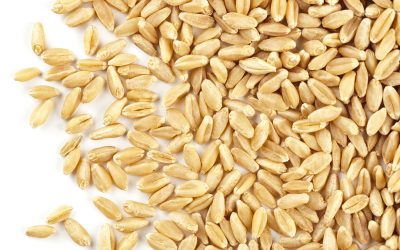EU legislation threatens US agriculture export

To maintain country-to-country relationships, the US Food and Drug Administration (FDA) is working to meet requests from the European Union (EU) to confirm the safety of US products.
A current testing initiative conducted by FDA began with an audit conducted by the EU’s Food and Veterinary Office last October. The results of the EU testing showed that the United States was not in compliance with several of the group’s antibiotic regulations.
As the leader of the drug residue compliance team for the FDA’s Centre of Veterinary Medicine, Deborah Cera was in the centre of the spiral as the storm reached FDA.
"Unfortunately, when the EU came over and audited our drug residue program in the United States, we didn’t do as well as we had hoped on it," she remembers.
"In fact, they failed us basically on milk, shell eggs, honey, farm-gamed meat, rabbits, bison and aquacultured seafood."
US products not special
"We didn’t just accept it; we tried to come back and fight the findings but, in all honesty, they’re not trying to require anything of us that they don’t require of their other member states," she admits.
The testing requirements for all imported agricultural products are listed on the EU’s Food and Veterinary Office (FVO)’s website.
With a goal "to ensure that Europe’s food supply is the safest in the world and that the same standards of food safety apply to all products regardless of origin," the regulatory body mandates that all imported products be tested for three various residues in four different categories of drugs.
"They let the individual country pick out which of those drugs would most likely be a hazard in their country so that we pick the drugs intelligently," Cera says.
Keeping goods flow
After failing to meet the guidelines of EU’s active residue testing program, members of the FVO contacted FDA to set up a meeting with Secretary of Agriculture Tom Vilsack and FDA Commissioner Margaret Hamburg. The goal of that meeting, Cera says, was to cease the movement of all U.S. imports into the EU by September.
"We had to try to figure out how to keep everything working and flowing, so a group from FDA went over to Brussels where they met with the EU," Cera says.
"The group proposed sampling assignments that would be conducted during this fiscal year that would hopefully determine what the hazards might be in the different commodities and US products."
The result of the original audit was that the US needed to comply with 11 recommendations for additional drug residue monitoring.
Cera indicates that the group’s ideas were instrumental in the final testing process that is set to begin in early 2012.
Tolerance testing
Similar to the FDA non-regulatory milk double-blinded sampling survey, the process to adhere to EU requests will use tolerance level testing for a large array of antibiotic residues in meat and milk products.
Specifically, the FDA will be searching for four classes of drug residues. First, tests will be conducted looking for traces of nitrobenzol products, sulfapyridine and enrofloxacin residues. The test will also look for drug residues that have been a concern in European dairy production.
"The other drugs we’re going to look for include a long list of other non-steroidal anti-inflammatory drugs," Cera says.
"The one that we have seen and has been a concern for us is phenylbutazone. It’s one of the most hazardous drugs to humans out there and should not be used in food animals, so we’re hoping to not find any residues."
EFSA sets tolerance level for T-2 and HT-2 toxins
T-2 toxin and HT-2 toxin are mycotoxins produced by various Fusarium species. The European Commission asked EFSA for a scientific opinion on the risk to human and animal health related to the presence of T-2 and HT-2 toxin in food and feed.
A total of 20,519 results for the sum of T-2 and HT-2 toxins in food, feed and unprocessed grains, collected in 2005-2010 from 22 European countries, were used in the evaluation.
The highest mean concentrations for the sum of T-2 and HT-2 toxins were observed in grains and grain milling products, notably in oats and oat products.
Grains and grain-based foods, in particular bread, fine bakery wares, grain milling products, and breakfast cereals, made the largest contribution to the sum of T-2 and HT-2 toxin exposure for humans.
Setting maximum daily intake
T-2 toxin is rapidly metabolised to a large number of products, HT-2 toxin being a major metabolite.
Pigs are amongst the most sensitive animals towards the effects of T-2 toxin, the most sensitive endpoints being immunological or haematological effects.
Using these data and a benchmark dose analysis the Panel on Contaminants in the Food Chain established a group tolerable daily intake (TDI) of 100 ng/kg bodyweight for the sum of T-2 and HT-2 toxins.
Estimates of chronic human dietary exposure to the sum of T-2 and HT-2 toxins based on the available occurrence data are below the TDI for populations of all age groups, and thus not a health concern.
For ruminants, rabbits and farmed fish the estimated exposures to the sum of these toxins based on the available occurrence data are considered unlikely to be a health concern, while for pigs, poultry, dogs and horses the risk of adverse health effects is low. For cats the health risk from the exposure to T-2 and HT-2 toxins cannot be assessed.











